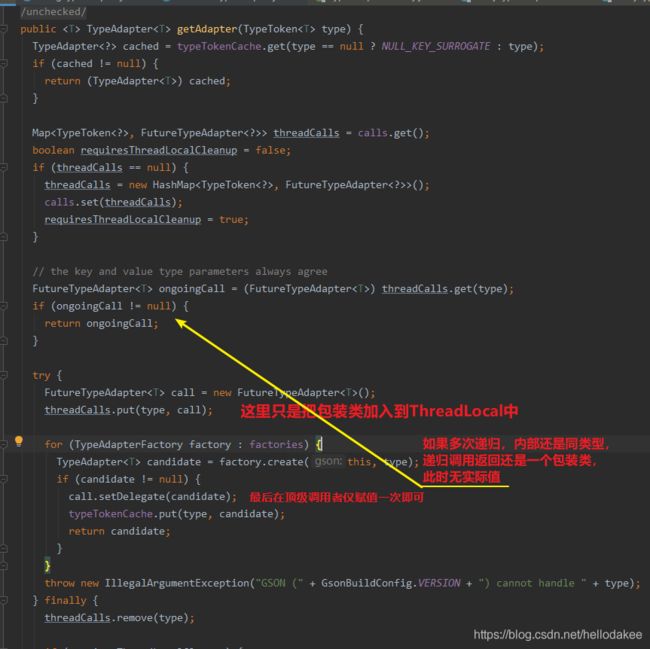- 性能测试工具Jmeter影响负载的X因素有哪些?
Feng.Lee
漫谈测试测试工具jmeter
在场景运行时,我们提到了JmeterGUI方式比较占资源,其实不管是GUI方式还是非GUI方式,运行时都会占用一定资源,那我们有没有办法提高负载机性能呢?既然是纯Java开发,我们就可以调整其性能参数,让其在JAVA虚拟机上运行起来更加顺畅,效率更高。在Jmter工具安装路径,找到如下文件\apache-jmeter-5.2.1\bin\jmeter.batif not defined JM_LA
- 适配器模式
程序研
javajava设计模式
适配器模式是一种结构型设计模式,主要用于将一个类的接口转换成另一个接口,以便原本由于接口不兼容而无法一起工作的类能够协同工作。该模式通过创建一个适配器类,将目标接口与适配者接口连接起来,实现不同接口之间的兼容性。适配器模式的两种形式类适配器类适配器通过继承适配者类并实现目标接口来工作。在Java中,由于不支持多继承,通常采用组合的方式,即适配器类包含一个适配者对象,并将目标接口的方法调用委托给该对
- JAVA之原型模式
程序研
java原型模式java
原型模式(PrototypePattern)属于创建型模式,它允许一个对象通过复制自身来创建一个新的对象,而无需通过构造函数创建。这种模式特别适用于创建复杂对象时,避免构造函数的复杂性,同时提高性能。以下是关于原型模式的详细介绍、JAVA代码实现、运行结果及注释。一、原型模式概述定义原型模式:用原型实例指定创建对象的种类,并通过复制这些原型创建新的对象。主要角色(1)抽象原型(Prototype)
- JAVA之装饰模式
程序研
javajava算法
装饰模式是一种结构型设计模式,允许在不改变对象接口的前提下,动态地给对象添加新的功能。通过创建装饰器类,可以灵活地扩展对象的行为,而无需修改原有的类结构。装饰模式的核心思想是使用组合关系来替代继承关系,从而提高系统的灵活性和可扩展性。装饰模式的组成部分Component(组件)接口:定义一个对象的接口,可以给这些对象动态地添加职责。ConcreteComponent(具体组件)类:实现Compon
- JAVA中的ByteArrayInputStream
程序研
javaI/Ojava开发语言后端I/O
Java中的ByteArrayInputStream类是一个字节数组输入流,它允许我们以字节的形式读取字节数组。本文将详细介绍ByteArrayInputStream的用法、特点以及代码示例,并展示运行结果。一、ByteArrayInputStream概述定义:ByteArrayInputStream类位于java.io包中,是InputStream类的子类。它使用字节数组作为输入源,可以方便地对
- JAVA中DateFormat详解
程序研
java开发语言java后端DateFormat
在Java中,`DateFormat`是一个抽象类,它用于格式化和解析日期。`DateFormat`允许进行日期-文本之间的转换,以及日期-时间之间的解析和格式化。Java提供了多个`DateFormat`的具体子类,其中最常用的是`SimpleDateFormat`,它允许进行自定义的日期时间格式。DateFormat的基本用法`DateFormat`类提供了以下几个重要的方法:`format(
- Node.js、Vue 和 React 的关系和区别
佐木宥轩
node.js
Node.js、Vue和React是前端和后端开发中常用的技术,它们各自有不同的作用,但可以协同工作来构建现代化的Web应用。为了通俗易懂地理解它们的关系,我们可以用一个餐厅的比喻来说明。1.Node.js:厨房的后台Node.js是一个基于JavaScript的运行时环境,主要用于构建服务器端应用程序。它就像餐厅的厨房,负责处理数据和逻辑。作用:提供后端服务,比如处理数据库、用户认证、文件上传等
- 【2024华为OD-E卷-100分-字符串分割】(题目+思路+Java&C++&Python解析)
执着的小火车
2024华为OD-E卷华为odjavac++华为算法数据结构
题目字符串分割给定一个字符串s和一个整数k,你需要将字符串s分割成恰好k个非空子字符串,使得这些子字符串中字典序最大的子字符串尽可能小。输入:第一行输入一个字符串s(只包含小写字母)。第二行输入一个整数k。
- Java设计模式之单例模式
倚-天-照-海
设计模式java设计模式单例模式
单例模式(SingletonPattern):确保某一个类只有一个实例,而且自行实例化并向整个系统提供这个实例,这个类称为单例类,它提供全局访问的方法。单例模式是一种对象创建型模式。单例模式有三个要点:一是某个类只能有一个实例;二是它必须自行创建这个实例;三是它必须自行向整个系统提供这个实例。对单例的实现可以分为两大类——懒汉式和饿汉式,他们的区别在于:懒汉式:指全局的单例实例在第一次被使用时构建
- Java面试题汇总-集合篇+JUC篇
泰山小张只吃荷园
java哈希算法开发语言后端面试springboot
其他面试题Java面试题汇总-Java基础篇(共50道题)-CSDN博客Java集合目录1.请你说说java中hashmap的原理2.HashMap的put(key,value)和get(key)过程3.在使用hashmap时,有哪些提升性能的技巧?4.什么是哈希碰撞?怎么解决哈希碰撞?5.谈一谈hashmap的扩容操作?6.hashmap的初始容量和负载因子越大越好吗?7.为什么jdk1.8之后
- TypeScript 中的类型推断:提升代码安全与开发效率
TypeScript是JavaScript的超集,通过在代码中添加静态类型检查来提升代码的安全性和开发效率。在使用TypeScript时,理解和利用类型推断机制是至关重要的。类型推断可以减少显式类型注解的需求,从而提高代码的可读性和开发效率。本文将深入探讨TypeScript中的类型推断机制,常见的推断场景,以及如何在实际项目中有效利用这一特性。什么是类型推断?类型推断是指编译器自动推断出变量或表
- 华为OD机试E卷 - 空栈压数(Java & Python& JS & C++ & C )
算法大师
最新华为OD机试python华为odjavajavascriptc语言c++华为od机考e卷
最新华为OD机试真题目录:点击查看目录华为OD面试真题精选:点击立即查看题目描述向一个空栈压入正整数,每当压入一个整数时,执行以下规则(设:栈顶至栈底整数依次编号为n1,n2,…,nx,其中n1为最新压入的整数)如果n1=n2,则n1、n2全部出栈,压入新数据m(m=2*n1)如果n1=n2+…+ny(y的范围为[3,x]),则n1,n2,…,ny全部出栈,压入新数据m(m=2*n1)。如果上述规
- Java基础:Iterator迭代器
重生之Java开发工程师
java开发语言
一、什么是Iterator:迭代器(Iterator)是一个对象,它的工作是遍历并目标序列中的对象,它提供了一种访问一个容器(container)对象中的各个元素的方法,把访问逻辑从不同类型的集合类中抽象出来,又不必暴露该对象内部细节。通过迭代器,开发人员不需要了解容器底层的结构,就可以实现对容器的遍历。由于创建迭代器的代价小,因此迭代器通常被称为轻量级的容器。常常使用JDK提供的迭代接口进行Ja
- [Java] 三种Java接收参数的方式的详细说明
Java应用接收到请求,获取请求参数。按形式分类,纯粹的独立的情况,就三类1、query传参形如GETapi/notice?id=1232、requestBody传参形如POSTapi/notice+requestBody3、路径变量传参形如GETapi/notice/{id}(注意:可以有组合使用的情况出现)1、query传参@GetMapping+@RequestParam接收参数假如后端接收
- Java 批量检测微信小程序封禁状态
java微信小程序
随着微信小程序的快速发展,管理小程序的状态变得越来越重要。若某个小程序因违规被封禁,开发者需要及时知晓。本文介绍了如何使用Java批量检测多个微信小程序的封禁状态,并通过接口获取每个小程序的最新状态。项目代码importjava.io.InputStreamReader;importjava.io.BufferedReader;importjava.net.HttpURLConnection;im
- java项目启动时,执行某方法
ShyTan
java开发语言
1.J2EE项目在Servlet类中重写init()方法,这个方法会在Servlet实例化时调用,即项目启动时调用。importjavax.servlet.ServletException;importjavax.servlet.http.HttpServlet;publicclassMyServletextendsHttpServlet{@Overridepublicvoidinit()thro
- 【华为OD-E卷 - 篮球比赛 100分(python、java、c++、js、c)】
CodeClimb
算法题华为od(A+B+C+D+E卷)收录分享华为odpythonjavac++javascript
【华为OD-E卷-篮球比赛100分(python、java、c++、js、c)】题目篮球(5V5)比赛中,每个球员拥有一个战斗力,每个队伍的所有球员战斗力之和为该队伍的总体战斗力。现有10个球员准备分为两队进行训练赛,教练希望2个队伍的战斗力差值能够尽可能的小,以达到最佳训练效果。给出10个球员的战斗力,如果你是教练,你该如何分队,才能达到最佳训练效果?请说出该分队方案下的最小战斗力差值输入描述0
- 【华为OD-E卷 - 敏感字段加密 100分(python、java、c++、js、c)】
CodeClimb
算法题华为od(A+B+C+D+E卷)收录分享华为odpythonjavac++javascript
【华为OD-E卷-敏感字段加密100分(python、java、c++、js、c)】题目给定一个由多个命令字组成的命令字符串:字符串长度小于等于127字节,只包含大小写字母,数字,下划线和偶数个双引号;命令字之间以一个或多个下划线_进行分割;可以通过两个双引号””来标识包含下划线_的命令字或空命令字(仅包含两个双引号的命令字),双引号不会在命令字内部出现;请对指定索引的敏感字段进行加密,替换为**
- 202501015
C18298182575
数据库
为什么不遵循最左匹配原则会导致索引失效最左匹配原则原因为什么不遵循最左匹配原则会导致索引失效最左匹配原则原因_mob6454cc7a6087的技术博客_51CTO博客java事物失效原因Spring事务@Transactional常见的8种失效场景(通俗易懂)_事务失效的8大场景-CSDN博客sql优化方案sql优化的15个小技巧(必知五颗星),面试说出七八个就有了_sql优化常用的15种方法-C
- 深入解析Vue.js组件开发:从基础到进阶
冷夜雨.
vue.js
Vue.js作为一款渐进式的JavaScript框架,其独特的设计理念和易用性使得它在现代前端开发中占据了重要地位。Vue组件是Vue.js中最核心的组成部分,它是构建应用的基础单元,也是Vue项目模块化和重用的关键所在。在这篇文章中,我们将深入探讨Vue.js的组件开发,涵盖从基础到进阶的各个方面,包括组件的创建、通信、生命周期、性能优化等内容,帮助你掌握Vue组件开发的核心技巧。一、Vue组件
- 基于JavaScript的网页设计案例分析:打造现代化、交互性强的网站体验
冷夜雨.
javascript
引言随着互联网的快速发展,网页设计的要求也在不断提升。从最初的静态页面到如今的动态、交互式网页,JavaScript作为一种重要的前端开发语言,已成为现代网页设计中不可或缺的一部分。它能够为网页带来更强的交互性、灵活性和动态效果,不仅提升用户体验,也能在设计过程中实现更复杂的功能。本文将通过一个具体的JavaScript网页设计案例,来展示如何利用JavaScript打造现代化、交互性强的网站,并
- 总结 JavaScript 中的变体函数调用方式
javascript前端
JavaScript中函数调用有许多独特的变体方式,例如~function、-function等。这些变体不仅展现了JavaScript语言的灵活性,也可以在某些场景下让代码更加简洁。本文将通过示例代码和解析,来全面剖析这些特殊的函数调用方式及其返回值的区别。IIFE的基础:自执行函数在深入了解特殊调用方式之前,我们先来复习一下IIFE(ImmediatelyInvokedFunctionExpr
- JAVA之单例模式
程序研
java单例模式
单例模式(SingletonPattern)是一种设计模式,用于确保一个类只有一个实例,并提供一个全局访问点来获取该实例。在软件设计中,单例模式常用于控制对资源的访问,例如数据库连接、线程池等。以下是单例模式的详细介绍及JAVA代码实现。一、单例模式的优点控制资源的使用,避免资源的多重占用。提供全局访问点,方便资源的管理。系统中只有一个实例,减少内存开销。避免对资源的多重占用,提高系统的性能。二、
- maven常见知识点
凉秋girl
mavenjava
1、maven是什么?maven是Java的包管理工具,因为java包太多了,使用工具统一管理。2、引入同一个包时使用哪个?会遵循路径最短优先和声明顺序优先两大原则。解决这个问题的过程也被称为Maven依赖调解。3、什么是POM?一个Maven工程都有一个pom.xml文件,位于根目录中,包含项目构建生命周期的详细信息。通过pom.xml文件,我们可以定义项目的坐标、项目依赖、项目信息、插件信息等
- Apache Maven介绍|Maven安装
dami_king
随笔apachemavenjava
ApacheMaven是一款流行的Java项目管理和构建工具,用于自动化构建过程,包括编译、测试、打包、依赖管理和发布等工作。以下是Maven安装步骤解析:在Windows系统中安装Maven下载Maven:访问Maven官方网站(https://maven.apache.org/download.cgi)下载最新的稳定版。通常下载的是.zip格式的归档文件。解压文件:将下载的.zip文件解压到一
- 今日探讨:Java 中的内存泄漏问题及其解决方案
内存泄漏(MemoryLeak)是编程中一种常见但非常棘手的问题,它指的是程序未能及时释放不再使用的内存,从而导致内存逐渐耗尽,最终影响程序的性能甚至引发崩溃。在Java中,由于垃圾回收机制(GC)的存在,许多开发者认为内存泄漏问题不再是一个问题,但实际上,Java程序仍然会出现内存泄漏,尤其是在不当使用对象和资源时。本文将重点探讨Java中的内存泄漏问题、其成因以及如何有效地避免和解决内存泄漏。
- Spring Boot 2 学习指南与资料分享
来恩1003
SpringBoot2springboot后端java
SpringBoot2学习资料SpringBoot2学习资料SpringBoot2学习资料在当今竞争激烈的Java后端开发领域,SpringBoot2凭借其卓越的特性,为开发者们开辟了一条高效、便捷的开发之路。如果你渴望深入学习SpringBoot2,以下这份精心准备的学习指南与丰富的资料分享将成为你前行的得力伙伴。一、学习指南(一)入门奠基环境搭建:Java环境:确保开发机器安装了Java8或更
- Java语言基础 关键字与保留字
鹿人甲丁
javajava
关键字(keyword)的定义和特点定义:被Java语言赋予了特殊含义,用做专门用途的字符串(单词)特点:关键字中所有字母都为小写官方地址:https://docs.oracle.com/javase/tutorial/java/nutsandbolts/_keywords.html用于定义数据类型的关键字classinterfaceenumbyteshortintlongfloatdoublec
- Apache SeaTunnel如何实现MongoDB到Doris无缝数据同步?
数据库
如果你需要使用ApacheSeaTunnel将MongoDB数据库的数据同步到Doris,你可以按照以下步骤进行操作。这些步骤基于ApacheSeaTunnel的官方文档和社区提供的最佳实践:一、环境准备下载并安装SeaTunnel:访问SeaTunnel的官方GitHub页面,下载最新稳定版本的SeaTunnel。解压下载的文件,并配置必要的环境变量(如JAVA_HOME)。配置MongoDB和
- 在 Go 中如何获取 goroutine 的 id?
后端go面试
如果你使用过如Python、Java等主流支持并发的编程语言,那么通常都能够比较容易的获得进程和线程的id。但是在Go语言,没有直接提供对多进程和多线程的支持,而是提供了goroutine来支持并发编程。不过在Go中,获取goroutine的id并不像其他编程语言那样容易,但依然有办法,本文就来介绍下如何实现。获取当前进程的id首先,虽然Go没有提供多进程编程,但启动Go程序还是会有一个进程存在的
- rust的指针作为函数返回值是直接传递,还是先销毁后创建?
wudixiaotie
返回值
这是我自己想到的问题,结果去知呼提问,还没等别人回答, 我自己就想到方法实验了。。
fn main() {
let mut a = 34;
println!("a's addr:{:p}", &a);
let p = &mut a;
println!("p's addr:{:p}", &a
- java编程思想 -- 数据的初始化
百合不是茶
java数据的初始化
1.使用构造器确保数据初始化
/*
*在ReckInitDemo类中创建Reck的对象
*/
public class ReckInitDemo {
public static void main(String[] args) {
//创建Reck对象
new Reck();
}
}
- [航天与宇宙]为什么发射和回收航天器有档期
comsci
地球的大气层中有一个时空屏蔽层,这个层次会不定时的出现,如果该时空屏蔽层出现,那么将导致外层空间进入的任何物体被摧毁,而从地面发射到太空的飞船也将被摧毁...
所以,航天发射和飞船回收都需要等待这个时空屏蔽层消失之后,再进行
&
- linux下批量替换文件内容
商人shang
linux替换
1、网络上现成的资料
格式: sed -i "s/查找字段/替换字段/g" `grep 查找字段 -rl 路径`
linux sed 批量替换多个文件中的字符串
sed -i "s/oldstring/newstring/g" `grep oldstring -rl yourdir`
例如:替换/home下所有文件中的www.admi
- 网页在线天气预报
oloz
天气预报
网页在线调用天气预报
<%@ page language="java" contentType="text/html; charset=utf-8"
pageEncoding="utf-8"%>
<!DOCTYPE html PUBLIC "-//W3C//DTD HTML 4.01 Transit
- SpringMVC和Struts2比较
杨白白
springMVC
1. 入口
spring mvc的入口是servlet,而struts2是filter(这里要指出,filter和servlet是不同的。以前认为filter是servlet的一种特殊),这样就导致了二者的机制不同,这里就牵涉到servlet和filter的区别了。
参见:http://blog.csdn.net/zs15932616453/article/details/8832343
2
- refuse copy, lazy girl!
小桔子
copy
妹妹坐船头啊啊啊啊!都打算一点点琢磨呢。文字编辑也写了基本功能了。。今天查资料,结果查到了人家写得完完整整的。我清楚的认识到:
1.那是我自己觉得写不出的高度
2.如果直接拿来用,很快就能解决问题
3.然后就是抄咩~~
4.肿么可以这样子,都不想写了今儿个,留着作参考吧!拒绝大抄特抄,慢慢一点点写!
- apache与php整合
aichenglong
php apache web
一 apache web服务器
1 apeche web服务器的安装
1)下载Apache web服务器
2)配置域名(如果需要使用要在DNS上注册)
3)测试安装访问http://localhost/验证是否安装成功
2 apache管理
1)service.msc进行图形化管理
2)命令管理,配
- Maven常用内置变量
AILIKES
maven
Built-in properties
${basedir} represents the directory containing pom.xml
${version} equivalent to ${project.version} (deprecated: ${pom.version})
Pom/Project properties
Al
- java的类和对象
百合不是茶
JAVA面向对象 类 对象
java中的类:
java是面向对象的语言,解决问题的核心就是将问题看成是一个类,使用类来解决
java使用 class 类名 来创建类 ,在Java中类名要求和构造方法,Java的文件名是一样的
创建一个A类:
class A{
}
java中的类:将某两个事物有联系的属性包装在一个类中,再通
- JS控制页面输入框为只读
bijian1013
JavaScript
在WEB应用开发当中,增、删除、改、查功能必不可少,为了减少以后维护的工作量,我们一般都只做一份页面,通过传入的参数控制其是新增、修改或者查看。而修改时需将待修改的信息从后台取到并显示出来,实际上就是查看的过程,唯一的区别是修改时,页面上所有的信息能修改,而查看页面上的信息不能修改。因此完全可以将其合并,但通过前端JS将查看页面的所有信息控制为只读,在信息量非常大时,就比较麻烦。
- AngularJS与服务器交互
bijian1013
JavaScriptAngularJS$http
对于AJAX应用(使用XMLHttpRequests)来说,向服务器发起请求的传统方式是:获取一个XMLHttpRequest对象的引用、发起请求、读取响应、检查状态码,最后处理服务端的响应。整个过程示例如下:
var xmlhttp = new XMLHttpRequest();
xmlhttp.onreadystatechange
- [Maven学习笔记八]Maven常用插件应用
bit1129
maven
常用插件及其用法位于:http://maven.apache.org/plugins/
1. Jetty server plugin
2. Dependency copy plugin
3. Surefire Test plugin
4. Uber jar plugin
1. Jetty Pl
- 【Hive六】Hive用户自定义函数(UDF)
bit1129
自定义函数
1. 什么是Hive UDF
Hive是基于Hadoop中的MapReduce,提供HQL查询的数据仓库。Hive是一个很开放的系统,很多内容都支持用户定制,包括:
文件格式:Text File,Sequence File
内存中的数据格式: Java Integer/String, Hadoop IntWritable/Text
用户提供的 map/reduce 脚本:不管什么
- 杀掉nginx进程后丢失nginx.pid,如何重新启动nginx
ronin47
nginx 重启 pid丢失
nginx进程被意外关闭,使用nginx -s reload重启时报如下错误:nginx: [error] open() “/var/run/nginx.pid” failed (2: No such file or directory)这是因为nginx进程被杀死后pid丢失了,下一次再开启nginx -s reload时无法启动解决办法:nginx -s reload 只是用来告诉运行中的ng
- UI设计中我们为什么需要设计动效
brotherlamp
UIui教程ui视频ui资料ui自学
随着国际大品牌苹果和谷歌的引领,最近越来越多的国内公司开始关注动效设计了,越来越多的团队已经意识到动效在产品用户体验中的重要性了,更多的UI设计师们也开始投身动效设计领域。
但是说到底,我们到底为什么需要动效设计?或者说我们到底需要什么样的动效?做动效设计也有段时间了,于是尝试用一些案例,从产品本身出发来说说我所思考的动效设计。
一、加强体验舒适度
嗯,就是让用户更加爽更加爽的用你的产品。
- Spring中JdbcDaoSupport的DataSource注入问题
bylijinnan
javaspring
参考以下两篇文章:
http://www.mkyong.com/spring/spring-jdbctemplate-jdbcdaosupport-examples/
http://stackoverflow.com/questions/4762229/spring-ldap-invoking-setter-methods-in-beans-configuration
Sprin
- 数据库连接池的工作原理
chicony
数据库连接池
随着信息技术的高速发展与广泛应用,数据库技术在信息技术领域中的位置越来越重要,尤其是网络应用和电子商务的迅速发展,都需要数据库技术支持动 态Web站点的运行,而传统的开发模式是:首先在主程序(如Servlet、Beans)中建立数据库连接;然后进行SQL操作,对数据库中的对象进行查 询、修改和删除等操作;最后断开数据库连接。使用这种开发模式,对
- java 关键字
CrazyMizzz
java
关键字是事先定义的,有特别意义的标识符,有时又叫保留字。对于保留字,用户只能按照系统规定的方式使用,不能自行定义。
Java中的关键字按功能主要可以分为以下几类:
(1)访问修饰符
public,private,protected
p
- Hive中的排序语法
daizj
排序hiveorder byDISTRIBUTE BYsort by
Hive中的排序语法 2014.06.22 ORDER BY
hive中的ORDER BY语句和关系数据库中的sql语法相似。他会对查询结果做全局排序,这意味着所有的数据会传送到一个Reduce任务上,这样会导致在大数量的情况下,花费大量时间。
与数据库中 ORDER BY 的区别在于在hive.mapred.mode = strict模式下,必须指定 limit 否则执行会报错。
- 单态设计模式
dcj3sjt126com
设计模式
单例模式(Singleton)用于为一个类生成一个唯一的对象。最常用的地方是数据库连接。 使用单例模式生成一个对象后,该对象可以被其它众多对象所使用。
<?phpclass Example{ // 保存类实例在此属性中 private static&
- svn locked
dcj3sjt126com
Lock
post-commit hook failed (exit code 1) with output:
svn: E155004: Working copy 'D:\xx\xxx' locked
svn: E200031: sqlite: attempt to write a readonly database
svn: E200031: sqlite: attempt to write a
- ARM寄存器学习
e200702084
数据结构C++cC#F#
无论是学习哪一种处理器,首先需要明确的就是这种处理器的寄存器以及工作模式。
ARM有37个寄存器,其中31个通用寄存器,6个状态寄存器。
1、不分组寄存器(R0-R7)
不分组也就是说说,在所有的处理器模式下指的都时同一物理寄存器。在异常中断造成处理器模式切换时,由于不同的处理器模式使用一个名字相同的物理寄存器,就是
- 常用编码资料
gengzg
编码
List<UserInfo> list=GetUserS.GetUserList(11);
String json=JSON.toJSONString(list);
HashMap<Object,Object> hs=new HashMap<Object, Object>();
for(int i=0;i<10;i++)
{
- 进程 vs. 线程
hongtoushizi
线程linux进程
我们介绍了多进程和多线程,这是实现多任务最常用的两种方式。现在,我们来讨论一下这两种方式的优缺点。
首先,要实现多任务,通常我们会设计Master-Worker模式,Master负责分配任务,Worker负责执行任务,因此,多任务环境下,通常是一个Master,多个Worker。
如果用多进程实现Master-Worker,主进程就是Master,其他进程就是Worker。
如果用多线程实现
- Linux定时Job:crontab -e 与 /etc/crontab 的区别
Josh_Persistence
linuxcrontab
一、linux中的crotab中的指定的时间只有5个部分:* * * * *
分别表示:分钟,小时,日,月,星期,具体说来:
第一段 代表分钟 0—59
第二段 代表小时 0—23
第三段 代表日期 1—31
第四段 代表月份 1—12
第五段 代表星期几,0代表星期日 0—6
如:
*/1 * * * * 每分钟执行一次。
*
- KMP算法详解
hm4123660
数据结构C++算法字符串KMP
字符串模式匹配我们相信大家都有遇过,然而我们也习惯用简单匹配法(即Brute-Force算法),其基本思路就是一个个逐一对比下去,这也是我们大家熟知的方法,然而这种算法的效率并不高,但利于理解。
假设主串s="ababcabcacbab",模式串为t="
- 枚举类型的单例模式
zhb8015
单例模式
E.编写一个包含单个元素的枚举类型[极推荐]。代码如下:
public enum MaYun {himself; //定义一个枚举的元素,就代表MaYun的一个实例private String anotherField;MaYun() {//MaYun诞生要做的事情//这个方法也可以去掉。将构造时候需要做的事情放在instance赋值的时候:/** himself = MaYun() {*
- Kafka+Storm+HDFS
ssydxa219
storm
cd /myhome/usr/stormbin/storm nimbus &bin/storm supervisor &bin/storm ui &Kafka+Storm+HDFS整合实践kafka_2.9.2-0.8.1.1.tgzapache-storm-0.9.2-incubating.tar.gzKafka安装配置我们使用3台机器搭建Kafk
- Java获取本地服务器的IP
中华好儿孙
javaWeb获取服务器ip地址
System.out.println("getRequestURL:"+request.getRequestURL());
System.out.println("getLocalAddr:"+request.getLocalAddr());
System.out.println("getLocalPort:&quo

